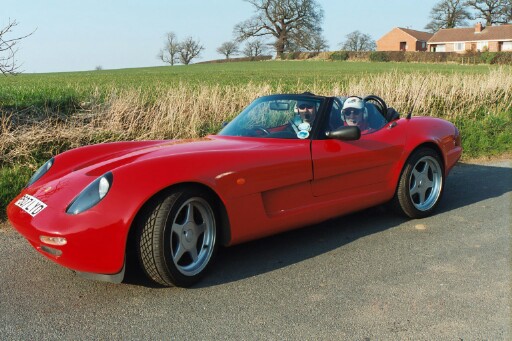

CATERHAM 21 "HPC" SUPERSPORT
Vauxhall 2.0 litre 16v
| This model was first shown in prototype aluminum bodied form at the 1994 motor show, when it was acclaimed to be one of the stars of the show. The car is based around the long lived Caterham [nee Lotus 7, with a slightly strengthened chassis, and a beautiful, fully enveloping, glassfibre body. | 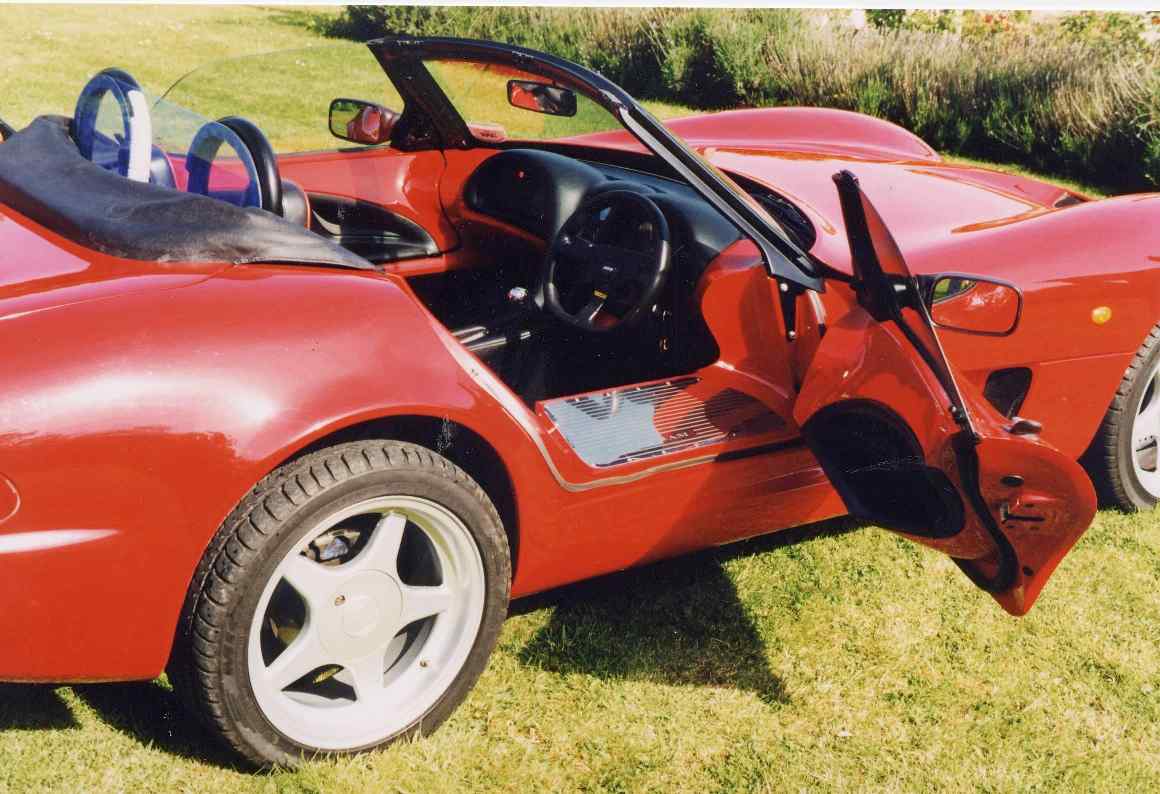 |
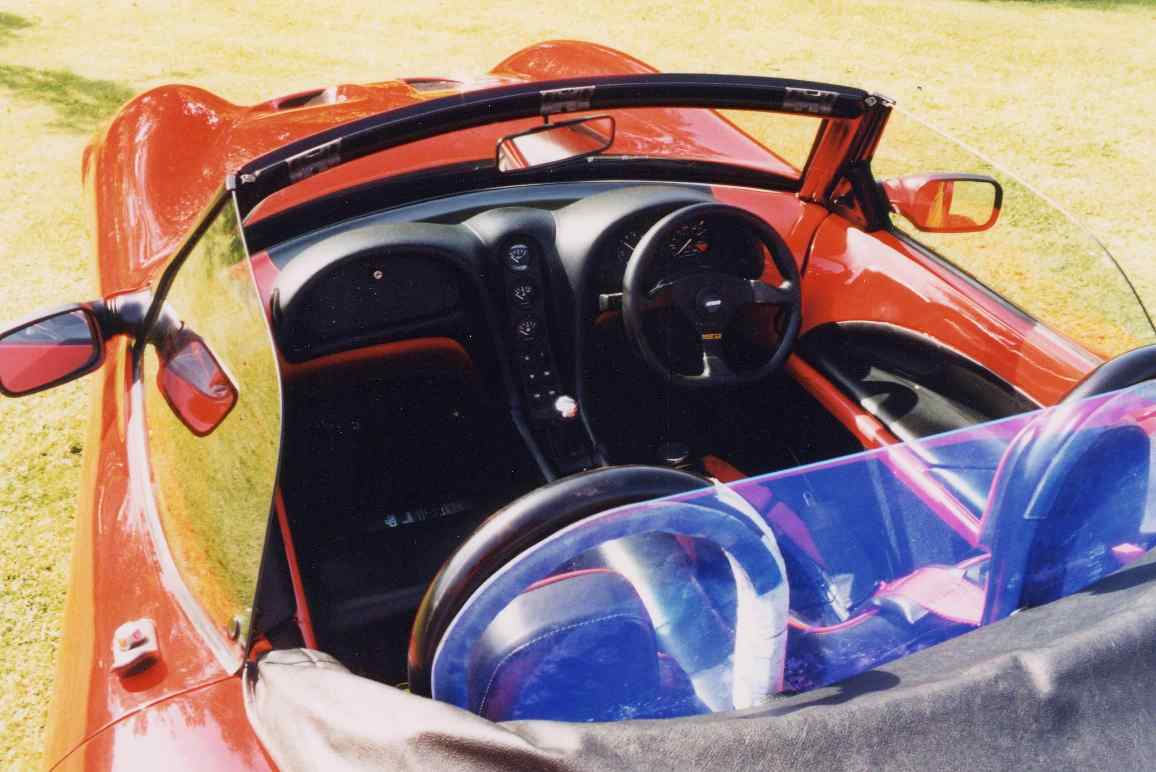 |
Suspension is by independent wishbones at the front and a dedion tube, semi independent setup at the rear, brakes are unassisted discs all round. Current Caterham 7 and 21 models now use mainly Rover “K” series engines of 1.6 and 1.8 litre capacity, although in the past the trusty Ford cross flow 1600cc and the mighty Vauxhall 2.0 litre 16v engine have been used to good effect. |
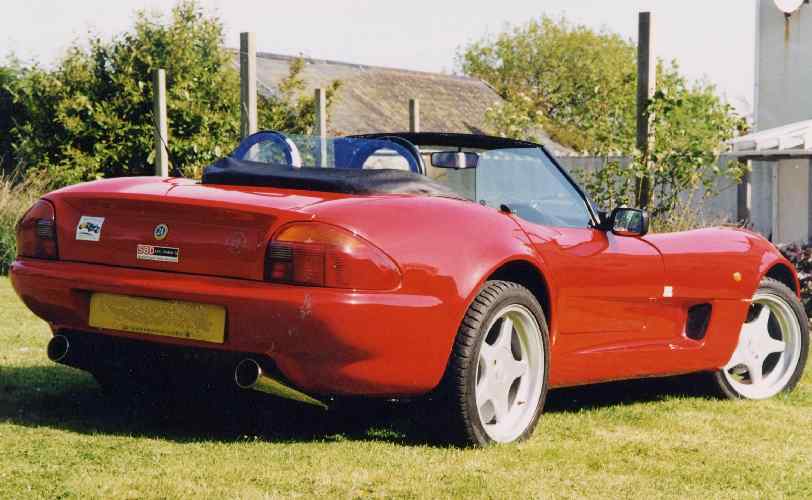 |
The 21 is a very rare production car, less than 60 ever having been made. They are currently only available to special order only, with a waiting list approaching 6 months. Each car is individually specified, and no two cars are the same. This particular car, features black leather “S” type seats, twin rollover hoops, a space saver spare wheel, an electrical power take off, map net in addition to the very special mechanical specification. |
| This particular 21 was the 5th production car made, and unusually was delivered in component form to Paul Jacobs, with a Rover 1.6 “K” engine, delivering approximately 115 bhp, 5 speed gearbox, 4 pot front brakes and uprated suspension. It took barely 2 full weekends and about 4 evenings to assemble the kit, and was registered and put on the road by 1st May 1997. | 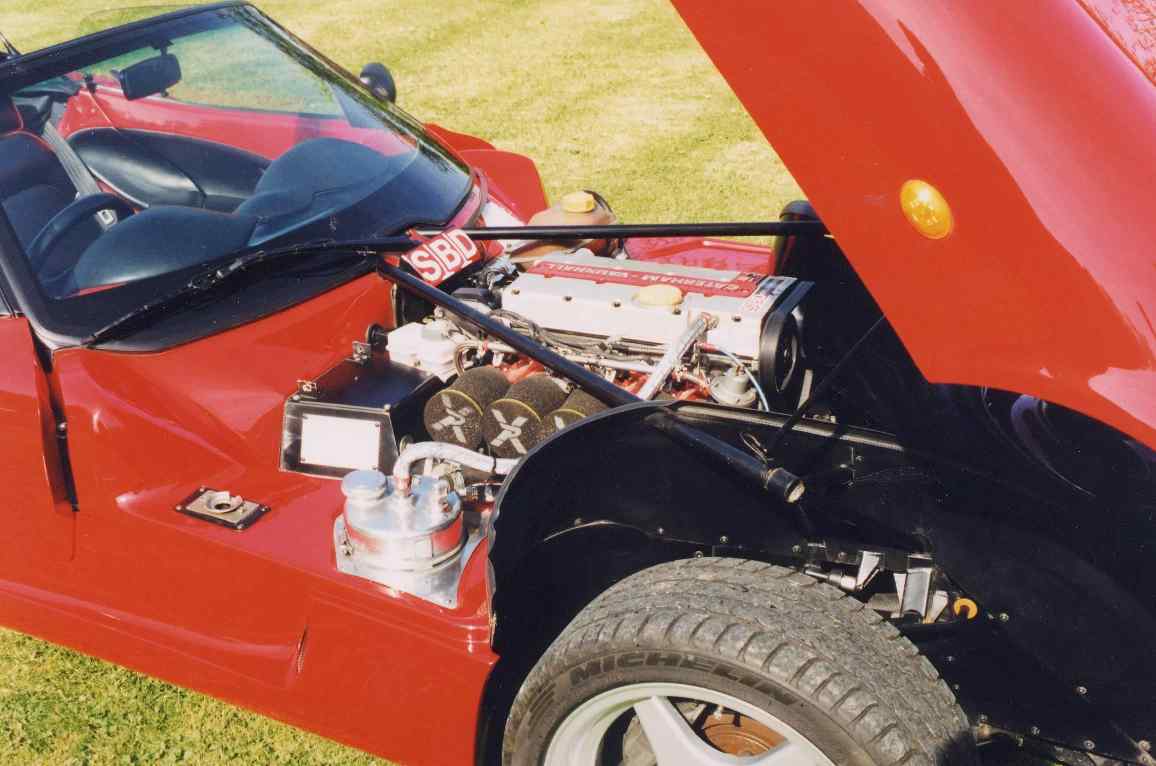 |
|
After a year and about 3000 miles in standard form, the car was taken off the road, and a full race tuned, dry sumped, Vauxhall 2.0 litre 16v XE engine was installed. This engine was formerly used to good effect in a sprint and speed hill climb Caterham 7 by Paul a couple of seasons earlier, and had been modified by SB Developments, Vauxhall tuning specialists, and set up on a dyno, where it showed peak power of 245bhp at 7750 rpm [flywheel figure], but more importantly giving a broad spread of torque between 130 lb ft at 3000rpm to 181 lb ft at 6750rpm. At this stage a close ratio gearbox and a ZF plate type limited slip differential were also fitted to get all this power onto the tarmac. The gearbox, whilst still based on the original 5 speed unit, was modified by Brian Hill of BGH Geartec, who specialise in upgrading gearboxes for fast road and race cars. The effect is to change the normal low first gear, to give longer gearing, improve lubrication, especially at fast cruising speeds and to improve the change quality, the box is also fitted with a "quick change" gearlever. As can be imagined, this amount of power in a car weighing less than 740 kgs gives more than adequate performance. |
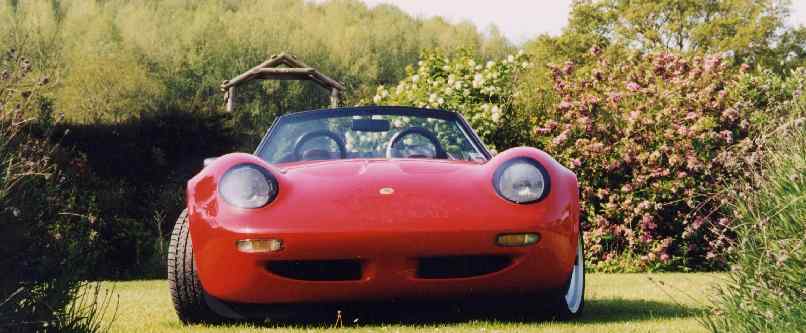 |
|
In the right conditions, the 0- 60 sprint can be accomplished in about 4 seconds, going on to a top speed in the region of 150mph[or more]! Roadholding is also of racetrack quality, being a direct development of the famous Caterham 7, known as “a racer for the road,” designed and built originally by Colin Chapman as the Lotus 7, before being bought by Caterham Cars, since when the car has been continually updated and modernized. |
|
This car is great fun to drive, being completely fuss free and tractable at low speeds, but with the acceleration and cornering power of a Supercar. A specially developed stainless steel exhaust system with tuned length primary and secondary pipes and a bespoke triple silencer system, takes care of the noise, with a measured FIA decibel rating of 98, [measured 1 metre from the exhaust pipe at an engine speed of 4500rpm], which gives quite restful cruising at 70mph, a mere half of its potential speed.
|
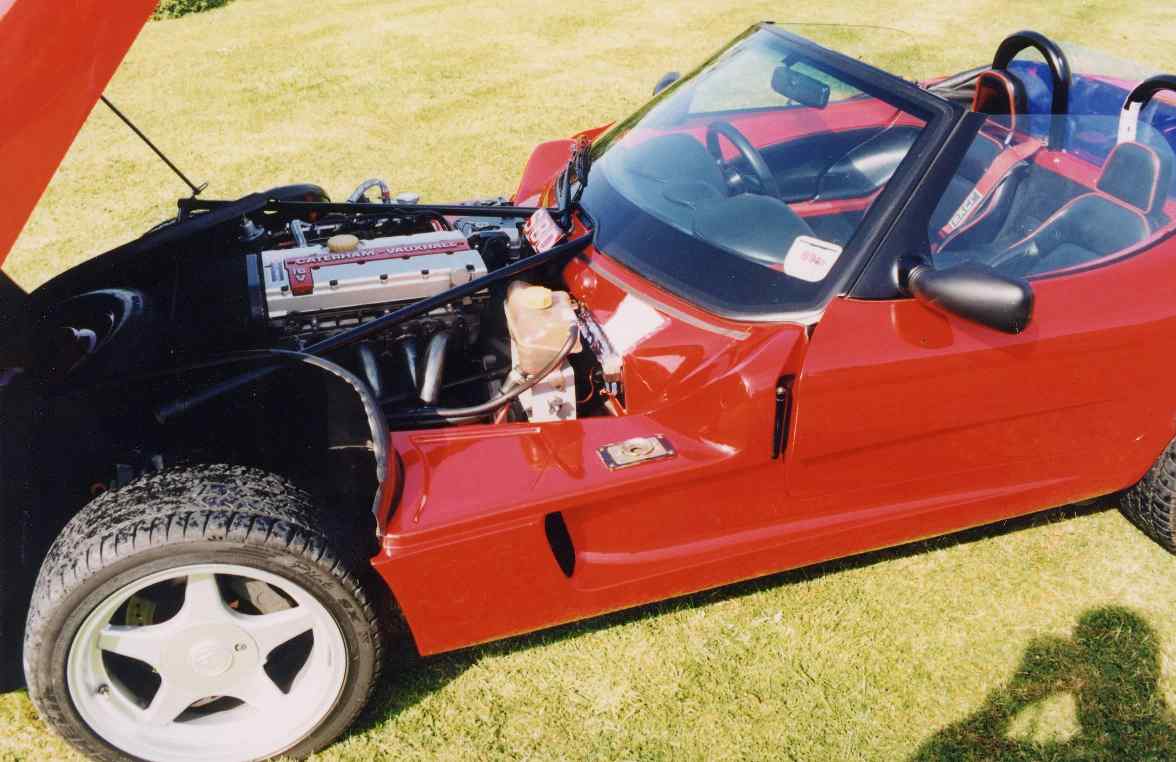 |
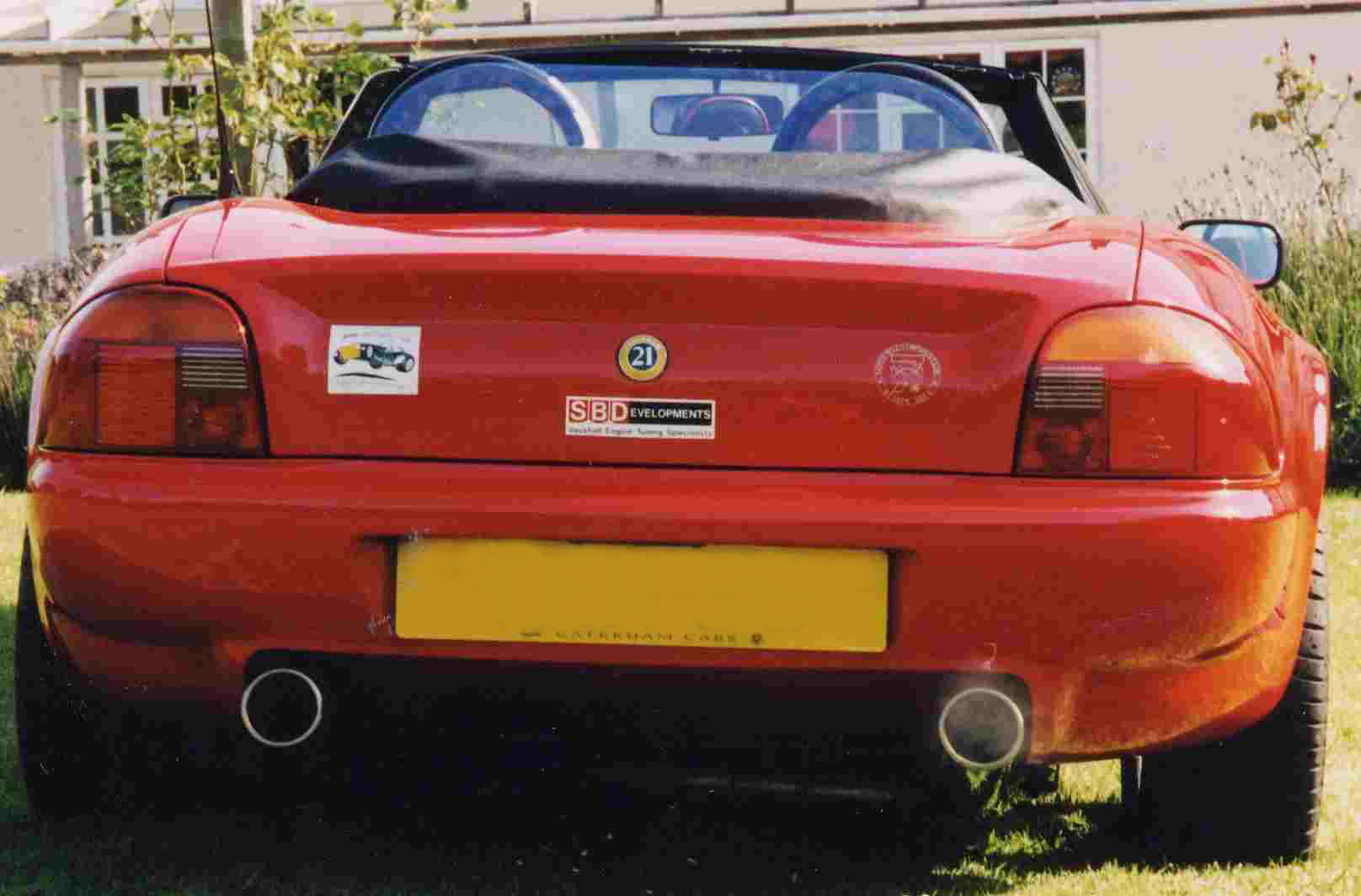
| This car has been used to good effect in Sprints during 1999 -— 2001, having won its’ class several times with its original owner at the wheel. There has been further ongoing development to improve the road holding and braking, resulting in the fitting of a Caterham "competition” big bore master cylinder and larger ventilated and drilled front discs, giving a solid, fade free setup. Suspension has been developed further with the use of AVO fully adjustable shock absorbers, utilizing sealed bearing bushes on the front ones and rubber bushes to the rear. These shock absorbers now have an adjustable range of 22 adjustments and can be set from "road comfortable" soft, to "race track" hard, springs seats are also adjustable to finely tune ride height and corner weights, whilst the springs themselves have been upgraded accordingly so that the fronts are now running 450lbs and the rears 200lbs. This setup still gives a comfortable road ride, with the dampers on their soft setting but harden them up and the track road holding is supreme and the ride flat through the corners, enough to be effective against virtually all normal cars on road or track................ |
This car has been to the workshops of Cars & Car Conversions magazine for an at “The Clinic” feature, in which resident technical editor, Dave [The Rave] Walker, put it through the full gamut of tests for competition cars where it showed that further work was needed on suspension alignment, shock absorbers and braking, all of which have now been done, finishing with a full, flat floor corner weight and suspension alignment setup in the autumn of 2001. His suggestions have been acted upon with subsequent improvements in road holding and braking. Power was shown to be down a little on the original dyno sheet, taken when the engine was first built, and is now a still fairly startling 219 bhp, measured at the flywheel, which shows that the engine is due for a mapping session of the ECU on a rolling road in the near future, to bring it back up to its full potential of 245bhp. This particular car was also featured in an article in “Which Kit” in 1999, when the editor was most impressed with the quality and integrity of the design and considered it to be one of the best cars of its’ kind on the market, whilst the December 2001 issue of Kit Car also featured it in a 4 page article, commenting on how impressive was, as well as giving a full history of the car and it's competition career. My brother (Simon) acquired the car in October 2002 and further updates will be provided as we need them!
|